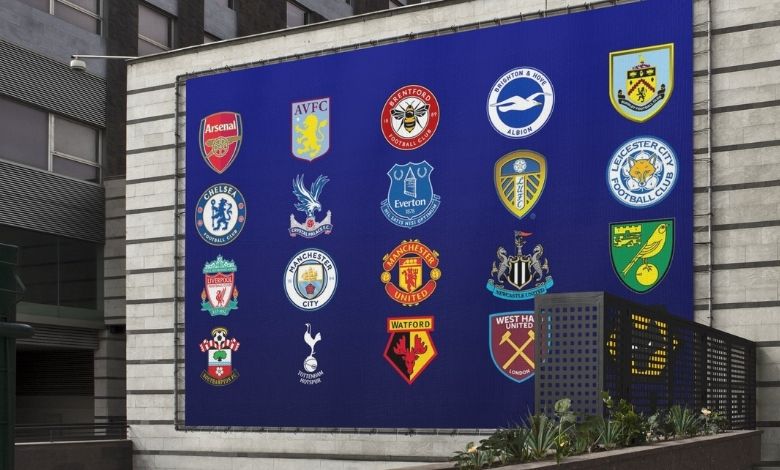Ever wondered how much money has the premier league grossed since 2000? We look at some astonishing financial growth of a true global giant.
If you are anything like me and have been ever blown away by the excitement and glitz of the Premier League of football, you must have at one time wondered how much money really was behind it. Well, I’m gonna spoil it for you… it is a lot. From watching underdog teams on Saturdays to seeing how their league business model developed over time, it’s simply amazing. Let’s get down to brass tacks-the numbers, stories, and key factors that combined to make this money-making monster, aka the Premier League.
Article Breakdown
Revenue Milestones Since 2000

The Premier League was not the cash cow it is today, although it had already gained popularity worldwide by 2000. Since then, its earnings have grown astronomically. Let’s look closer:
- 2000/01 Season: At the time, the league attracted approximately £937 million, which then was quite something and up by 21% on the previous year.
- 2016/17 Season: Fast track, and the revenue shot up to £4.5 billion. The clubs took £2.4 billion as central payments while another £343 million were forwarded to assist EFL clubs.
- 2022/23 Season: An outstanding €6.97 billion is what cements the Premier League’s position as the richest league in Europe, widening the gap from its nearest competitors, La Liga and Serie A.
- 2024/25 Projections: Analysts put the revenue to reach €7.5 billion, proof of an unmatched ability to grow and seize new opportunities.
Factors Driving Growth
What’s behind these massive figures? It’s not just the great football on the field: smart business moves, clever branding, and a growing fan base have turned the Premier League into a financial powerhouse.
Licensing the Broadcast: The Real MVP
It is actually the broadcasting deals that are behind the financial success of the Premier League.
Domestic TV Deals: They had secured a £5 billion deal back in 2016 for the UK broadcast rights. That has, since then, been a game-changing moment for not only obviously the league but setting the benchmark for sports broadcasting across the world.
Overseas Broadcasting
The Premier League has a global following, and international TV rights are a cash cow. Overseas deals alone should yield $7.2 billion between 2022 and 2025, enough to sell 144 million jerseys at £50 apiece.
Controversies and Challenges
Of course, it’s not all rainbows and record-breaking revenues. With great wealth comes great scrutiny. Let’s explore some of the controversies that have shadowed the Premier League’s financial success.
Competitive Balance: A Rich Man’s League?
One of the biggest criticisms leveled at the Premier League is the growing financial disparity between clubs. The “Big 6” (Manchester United, Manchester City, Liverpool, Chelsea, Arsenal, and Tottenham Hotspur) dominate not just on the pitch but also in their bank accounts. Smaller clubs struggle to keep up, often unable to compete for top talent.
Financial Fair Play (FFP) Regulations
FFP was introduced to prevent clubs from spending beyond their means, but enforcement has been spotty at best. Manchester City’s recent legal troubles, over alleged breaches of financial regulations, have reignited debates about how seriously these rules are taken. As a fan, it’s disheartening to see the beautiful game entangled in legal battles over money.
Opinions and Debates
What do people really think about the Premier League’s financial growth? The opinions are as diverse as the league’s global fan base.
Fans’ Perspectives
Many fans celebrate the league’s success, proud of its status as the pinnacle of club football. But others voice concerns about how money has influenced the game. “Football’s lost its soul,” a friend once said, lamenting the commercialization of the sport. It’s a sentiment echoed by many who miss the days when local talent and community spirit defined clubs.
Experts’ Take
Analysts acknowledge the Premier League’s financial dominance but warn of potential risks. A 2019 report argued that the league’s economic power could “crush” European football, leaving other leagues struggling to compete.
Stakeholders’ Calls for Reform
Even within the league, there are calls for change. Aston Villa’s owner, Nassef Sawiris, has criticized current financial rules as “anti-competitive” and has called for reforms to level the playing field. Meanwhile, debates over spending caps rage on, with some arguing that they’re essential for sustainability, while others fear they’ll stifle competitiveness.
The Future of Premier League Finances
As the Premier League marches toward even greater financial success, the question remains: what’s next?
Revenue Projections
With forecasts predicting revenues of €7.5 billion by 2024/25, it’s clear that the league’s financial juggernaut shows no signs of slowing down. New broadcasting deals, innovative sponsorships, and emerging markets promise to keep the cash flowing.
Potential Reforms
The push for financial reforms will likely intensify. Whether it’s stricter enforcement of FFP rules, spending caps, or revenue-sharing models, changes could reshape the league’s financial landscape. As a lifelong fan, I hope these reforms strike a balance between fairness and the competitive edge that makes the Premier League so thrilling.
Key Takings
- The Premier League’s financial growth since 2000 has been unbelievable.
- It started small but has grown into a multi-billion-pound powerhouse, showing just how far a sports league can go.
- That said, its success brings some big challenges and responsibilities.
- As a fan, I just hope it keeps thriving without losing the integrity and heart of what makes football the beautiful game.
Additional Resources:
- How The Premier League Became a Sports Business Juggernaut: This article dives into how overseas investments and skyrocketing TV viewership turned the Premier League into a global sports powerhouse.
- Premier League and the money behind it: Ever wonder how Premier League teams make so much money? This article breaks down their business model, from sponsorships to merchandise and ads, to show how they’ve become financial powerhouses.
- How the Premier League grew into the biggest soccer league: Curious how the Premier League became so popular in the U.S.? This article explains how smart marketing and TV deals helped grow their American fan base.



